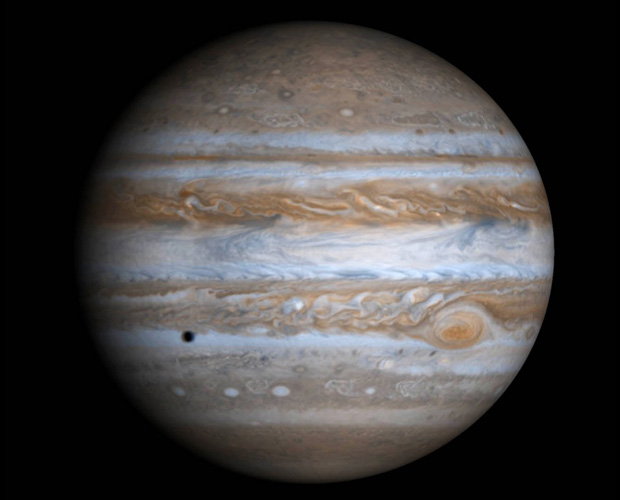
 |
|
|
|
| 5th planet from the Sun, the largest planet in the solar system | |
| Average distance from the Sun | 778,330,000 km / 5.20 AU |
| Diameter | 142,984 km (equatorial) |
| Mass | 1.900e27 kg |
| Orbital period around the Sun | 11.86 Earth years / 4330 Earth days |
| Number of moons | more than 60 moons |
 |
|
| Jupiter has an interesting feature called the Great Red Spot, a huge storm of swirling gas that has lasted for hundreds of years. Three Earths would fit within the boundaries of the Great Red Spot, which appears brownish-red. Jupiter has more than 60 known moons including four—Io, Europa, Ganymede and Callisto—that were discovered in 1610 when Galileo was the first to view it through a telescope. They can be seen easily through binoculars or a small telescope. Ganymede is the largest moon in our solar system—larger than even the planet Mercury—and is the first moon known to have its own magnetic field. | |
 Our Solar System
Our Solar System
Our solar system is located on the edge of a spiral arm called Orion’s Arm, and is one-half to two-thirds of the way (28,000 light-years) from the center of our Milky Way galaxy.The Sun, Sol
The Inner Planets
Mercury
Venus
Earth
The Moon
Mars
The Asteroid Belt
Dwarf planet, Ceres
Asteroid, Ida
Asteroid, Vesta
Asteroid, Eros
The Outer Planets
Jupiter
Saturn
Uranus
Neptune
The Kuiper Belt
Dwarf planet, Pluto
Dwarf planet, Eris
The Oort Cloud
Dwarf planet, Sedna
Comet Halley
Comet Hale-Bopp
Glossary of Terms